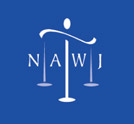Chief Justice Barbara Madsen Testimonial
Customer Testimonial
In the mid-1980s I was appointed by the members of the Seattle Municipal Court bench to the position of court commissioner. I quickly found that I enjoyed judging. Since the commissioner position served at the pleasure of the bench, I decided I would like to be considered for an elected judicial position. At the time there were very few women judges in Washington and, more daunting, I did not have the first clue about the process for becoming a judge. After I was appointed commissioner I became a member of the NAWJ and began attending the annual conference. It really took only one conference to become an enthusiastic NAWJ supporter. The education program was unlike any other I had attended. The issues were at the cutting edge of judicial and academic debate and involved topics that I cared deeply about--gender bias in the courts, reproductive freedom, increasing the presence of women on the bench, to name a few. In addition to the programming, I met women judges from around the country, shared amazing stories with them, and learned of the huge challenges that women in our shared profession were facing all across the country. After each conference I came back to my court re-energized and excited to be part of changing the culture of the legal profession.
Fortuitously, In 1986 or 87 the National Association of Women Judges (NAWJ) annual conference was held in Seattle. One of the topics was titled, "So, you want to be a judge." This was a "nuts and bolts" presentation of how to run for election and/or appointment to the bench. The presenters were the few local women who had made it to the bench. These women shared the tips and tools that worked, or not, in their own quests. I took many notes and got follow-up advice from the very generous NAWJ members who had presented. Following their advice, I sought and won appointment through a merit selection process. NAWJ's commitment to gender equality and promoting women to the bench was real then and continues to be a powerful force for change, both domestically and in the international community of women.
Later, in 1992 I decided to run for a seat on the Supreme Court in response to the testimony of Anita Hill and to my continued commitment to actively address gender bias in the legal system in Washington State. Much of what I learned about running for appointment though the NAWJ program translated well in running for election, and I won a seat on the court. In 1995 the Washington Supreme Court established the Gender and Justice Commission to explore and erase gender bias in our state's courts. In 1998 I became chair of the Commission. Again, it was the support of the NAWJ and its Gender Bias Consortium, convened by Lynn Hecht-Shaffron, that led to the success of the Washington State Gender and Justice Commission in raising and solving issues of gender bias in Washington. From "borrowing" NAWJ education programs for Washington judicial training, to adapting NAWJ projects, such as the "Color of Justice" and "Success, Inside and Out", to attending the reinvigorating annual conferences, NAWJ has been a critical support, an inspiration, and a motivator for gender bias work in Washington.
Stemming from ideas first surfaced through NAWJ, our Gender and Justice Commission successfully worked to pass legislation banning the shackling of women prisoners during labor and delivery. Based on programs first offered through NAWJ, our commission has educated Washington State judges on topics ranging from understanding domestic violence, to recognizing and addressing the challenges of women of color on the bench and in the profession, to demystifying VAWA's impact on immigrant women, to surfacing sex trafficking, to developing protocols for weapons surrender. Emulating "Success, Inside and Out", we have developed relationships with the women's correctional facilities to address re-entry issues facing women inmates. Based on the "Color of Justice" project, we have brought children of color into contact with careers in the justice system. These are only a few examples of NAWJ leading and influencing the gender equality efforts in my state, across the country and throughout the world--it would take volumes to discuss the impact, both on fighting for gender equality in the law and the legal system and in inspiring women to take on gender bias in our courts.
On the personal side, the impact of NAWJ is equally powerful. NAWJ has fostered relationship building among some of the smartest, most committed women in the country. The opportunity that NAWJ provides for meeting and sharing stories, experiences, challenges and successes with other women jurists, lawyers and law-makers is incomparable. NAWJ is an organization that actually makes a difference and brings real, positive change.
